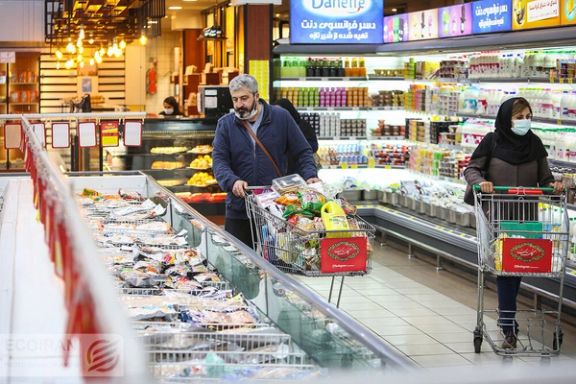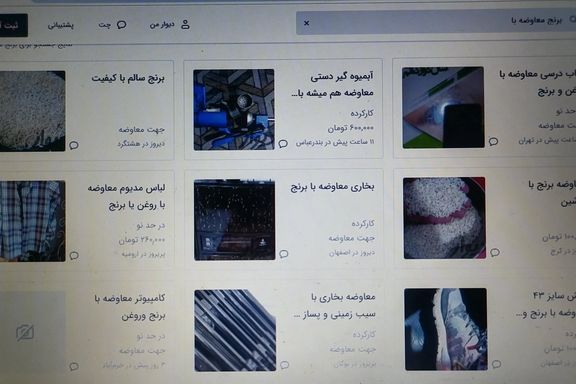More Iranians Are Bartering Belongings For Food

A man has put his sneakers on sale in exchange for meat, and another is ready to barter his books for rice; this is how Iranians are dealing with rising food prices.

A man has put his sneakers on sale in exchange for meat, and another is ready to barter his books for rice; this is how Iranians are dealing with rising food prices.
A report published by Shargh newspaper on Sunday has given several such examples of personal ads put on online sale platforms by Iranians who have resorted to selling their personal belongings to be able to provide food for their families.
The article said that the high rate of inflation and the resulting poverty has led to the new phenomenon, in which more and more people have resorted to exchanging their household and personal items for food.
According to the report, Iranian online sale platforms are full of ads by people who want to exchange their clothes, shoes, vacuum cleaners, and heaters with chicken, oil, rice or beans. For example, in one case a shirt is priced at about 2,600,000 rials – or less than $8 – which can buy about one kilogram of meat or about four kilograms of chicken.
The report also said that fruit prices have increased so much that people have started to buy fruits one piece at a time although Iranians were used to buying fruits in kilos when the prices were lower.
Iran’s point-to-point inflation for the previous Iranian calendar month – which ended November 21 – was about 50 percent with food inflation recorded at above 70 percent in 12 provinces.

The inflation rate for food items was especially high in the province of Sistan-Baluchestan, reaching a whopping 84 percent, with Lorestan province hitting 78 percent to be at second place. The two provinces are low-income regions where the quality of the items they consume are also lower than in other provinces.
The figures indicated a slower rise in prices as food price inflation reached even 100 percent in some provinces in previous months. According to the data published by the Statistical Center of Iran (SCI) in late July, the overall nationwide point-to-point annual food inflation rate in June 2022 compared with the same period in 2021 was 87 percent, but in four provinces the rate reached almost 100 percent.
Most price increases happened since early May when the government scrapped a food import subsidy to save around $15 billion annually. The move immediately triggered a massive rise in prices for basic food staples, such as bread, dairy products, cooking oil and meat.
Although the government has repeatedly said its oil exports are steadily increasing despite sanctions by the United States, economic conditions keep deteriorating, with Iran's battered currency, the rial, hitting historic lows in recent months with sporadic recuperations. The battered rial has dropped to a low of 370,000 against the US dollar, an almost 50-percent decline in 15 months. It was trading at 280,000 in August 2021 when the current hardliner president Ebrahim Raisi was elected.
The Iranian currency began to lose most of its value in 2018 when the United States pulled out of the nuclear accord known as JCPOA and imposed crippling economic sanctions. Since then, the currency has fallen more than tenfold against the dollar. Although the Islamic Republic has been able to partly circumvent the sanctions by illicit oil exports to China at discounted prices, the volume of around one million barrels per day is not sufficient to sustain the economy, which is mostly dependent on oil export revenues.